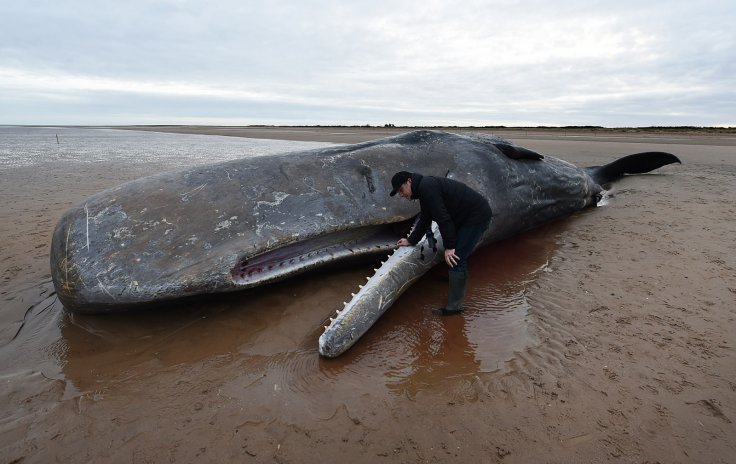
A sperm whale was found dead on Sothern coast of Spain and officials discovered 29 kilos of plastic and other waste materials from its stomach during the autopsy, which may serve as campaign material against dumping plastic waste in the sea.
The body of the marine animal was washed ashore at Cabo de Palos in Mercia at the end of February. While analysing the dead sperm whale, experts from the region's El Valle Wildlife Rescue Centre noted that it was around 10 meters long and weighed more than six tonnes.
Later during an autopsy, they were shocked to realize that it had swallowed plastic bags, netting and even a jerry can and the medical report showed that the reason behind its death was peritonitis, which is an infection of the inner lining of the stomach. The experts also mentioned that the creature had been unable to digest the plastic, which triggered its death.
The director-general for nature and environment in the Murcian government, Consuelo Rosauro told The Telegraph that the plastic waste in the ocean has become the biggest threat to the marine world, as many marine animals get trapped in the rubbish or swallow a huge quantity of plastic which ends up causing their death.
This endangered species, sperm whales are usually found in the world's oceans, except the high Arctic. This is largest toothed whales and has the biggest brain compared to any other creature on the earth.
These whales have received their names during the days of commercial whaling. The whalers used to believe that the brain of these creatures is a kind of storage of sperms because when they cut the head, they found a white milky substance.
As per the records provided by National Ocean and Atmosphere Administration (NOAA), the best estimate of sperm whale population worldwide is between 200,000 and 1,500,000 but is based on extrapolations from only a few areas that have maintained the estimates.
NOAA stated that in terms of the current condition, these whales are facing four major threats such as:
- Ship strikes.
- Entanglements in fishing gear, although these are not as great of a threat to sperm whales as they are to more coastal cetaceans.
- Disturbance by anthropogenic noise, notably in areas of oil and gas activities or where shipping activity is high.
- Pollutants (e.g. polycholorobiphenyls (PCBs), chlorinated pesticides (DDT, DDE, etc.), polycyclic aromatic hydrocarbons (PAHs), and heavy metals). The potential impact of coastal pollution may be an issue for this species in portions of its habitat, though little is known.
The United Nations has proposed that securing marine life or making the underwater atmosphere healthy is one of the 17 Sustainable Development Goals (SDGs) and has given a universal call to take action to end poverty, protect the planet and ensure that all people enjoy peace and prosperity.
The 14th goal states that the ocean's temperature, chemistry, currents and life- drive global systems are essential to make the Earth habitable for humankind, and to counterbalance the effects of climate change.
The UN Development Program (UNDP) says nearly 30 percent of the world's fish stocks over-exploited and oceans absorb about 30 percent of the carbon dioxide produced by humans, leading to 26 percent rise in ocean acidification since the beginning of the industrial revolution.
"Marine pollution, an overwhelming majority of which comes from land-based sources, is reaching alarming levels, with an average of 13,000 pieces of plastic litter to be found on every square kilometre of ocean," it said.









